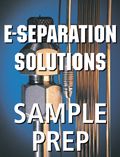More on Degassing Mobile Phase Solvents
The answer to the following reader question about degassing mobile phase solvents was supplied by LCGC?s ?LC Troubleshooting? columnist John Dolan.
The answer to the following reader question about degassing mobile phase solvents was supplied by LCGC’s “LC Troubleshooting” columnist John Dolan.
Now that helium costs are high, our labs are considering switching to hydrogen as a carrier gas in our gas chromatography applications. Do you think it is necessary to maintain helium in the laboratory solely for sparging mobile phase? Can nitrogen be substituted?
John Dolan: Unfortunately, nitrogen will not work for degassing high performance liquid chromatography (HPLC) mobile phases. Nitrogen does displace the oxygen, but its solubility characteristics are such that it causes outgassing problems — this is why we degas in the first place, to get rid of nitrogen and oxygen. An alternative that many laboratories use today are the in-line degassers that are offered with most new HPLC equipment and can be purchased as after-market add-ons for your system. For most cases, these work fine. If you have a method that is very sensitive to oxygen (for example, electrochemical in reductive mode), you will need to use helium sparging, but for most other applications the in-line vacuum degasser will work fine. There are many laboratories that have these and never use helium sparging.
Questions?
LCGC technical editor Steve Brown will answer your technical questions. Each month, one question will be selected to appear in this space, so we welcome your submissions. Please send all questions to the attention of "Ask the Editor" at lcgcedit@lcgcmag.com We look forward to hearing from you.

Determining Neurotransmitters in Spinal Cords with UHPLC
February 18th 2025Researchers at Jilin University (Changchun, China) developed a highly sensitive, rapid, and accurate method for analyzing neurotransmitters (NTs) in rat spinal cord tissue. Ultra-high performance liquid chromatography-triple quadrupole tandem mass spectrometry (UHPLC-QqQ-MS/MS) in conjunction with ultra-ionic liquid dispersive liquid-liquid microextraction (UA-MIL-DLLME) were used to extract NTs for analysis.
The Next Frontier for Mass Spectrometry: Maximizing Ion Utilization
January 20th 2025In this podcast, Daniel DeBord, CTO of MOBILion Systems, describes a new high resolution mass spectrometry approach that promises to increase speed and sensitivity in omics applications. MOBILion recently introduced the PAMAF mode of operation, which stands for parallel accumulation with mobility aligned fragmentation. It substantially increases the fraction of ions used for mass spectrometry analysis by replacing the functionality of the quadrupole with high resolution ion mobility. Listen to learn more about this exciting new development.
Revolutionizing LC-MS with Next-Gen Separation for Cyclic Peptide Analysis
February 17th 2025Cyclic peptides, known for their stability and high specificity, are promising therapeutic agents in the fight against cancer, infections, and autoimmune diseases. However, developing effective cyclic peptides presents numerous challenges, including poor pharmacokinetics, efficacy, and toxicity. Traditional methods like liquid chromatography tandem-mass spectrometry (LC-MS/MS) often struggle with resolving isomeric linear peptide metabolites, posing significant risks in safety, efficacy, and regulatory approval. In this paper, Komal Kedia, PhD, will share how she leveraged MOBIE’s high-resolution ion mobility-mass spectrometry (IM-MS) system to achieve a 72% reduction in run times, 200% greater resolving power, and enhanced accuracy in identifying “soft spots” prone to enzymatic degradation.











